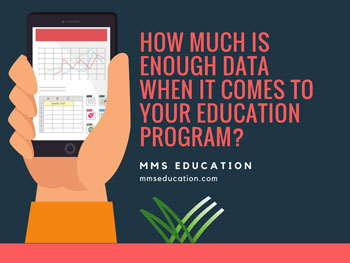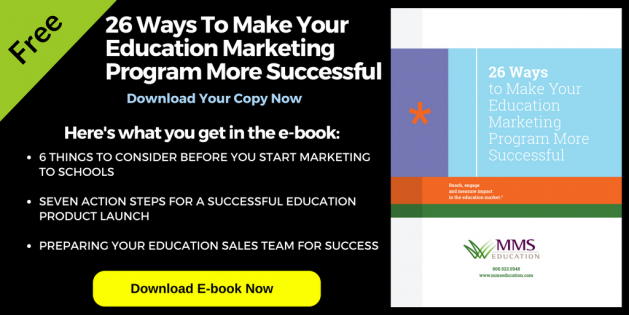How Much Is Enough Data When It Comes to Your Education Program?

– by Pierce Baugh, CIO
PBaugh@mmseducation.com
Less can be more especially when it comes to data—here are some tips to be sure you’re not trying to capture too much information.
I’ve been working with data and databases for longer than I care to admit. Can you say IBM XT? Ah, the good old days. During that time I worked with many people and organizations to create databases to hold important program and organizational data. When you sit down to discuss what information you want to capture, the world is your oyster. At this stage, it’s easy to be tempted by the lore of unlimited data. You many think “What if I could know EVERYTHING about my program participants, heck why wouldn’t I?” Well there are a number of reasons why you wouldn’t.
Why you don’t need to know everything
First of all, you have the very practical limitation of how much time a person is willing to take to fill out your form. You have to be respectful of your participant’s time, so for this reason alone you want to limit what you capture.
The second great reason to limit your data capture is for privacy—you never want to capture more information than you need. At one time your only real reason for this was to be less invasive. Today, as a data host, you have an escalating liability with every piece of personally identifiable information you capture. This is even more critical for student data, where the stakes are even higher.
How can less be more?
From an analytical perspective, I’d rather have a database with 95% reliable data on a person’s location (state) than a database where I have partial and less complete addresses. I’d rather have a drop-down list of 10 job titles with good compliance than a less-complete list of 100 titles. Remember, it’s not only the amount of data you capture but your ability to analyze that data. There are many times where the data sitting in a database is never analyzed or adds no real value to the analysis you need. As you’re thinking of data collection, make sure you’re capturing data that you can analyze and act upon.
What do you really need?
For example, if a person is registering on a website, what do you really need? If you have a registrant who selects their school from a drop-down list and know the registrants first name, email address, and job title, you really have all you need to understand who is using your program and how to communicate with them. Now you can focus on a few key program metrics totally minimizing the amount of data you’re asking for while providing robust reporting capability. The system will tell you when they registered, and their link to the school opens you up to a world of information.
By limiting the data you capture, you can help assure that the information you do have is complete and accurate. Further leverage that with key program data and a good school data source, and you’ve got the best of all worlds. Most importantly, you’re respecting your participant’s time and privacy while limiting your exposure and maximizing your analytical capabilities.

